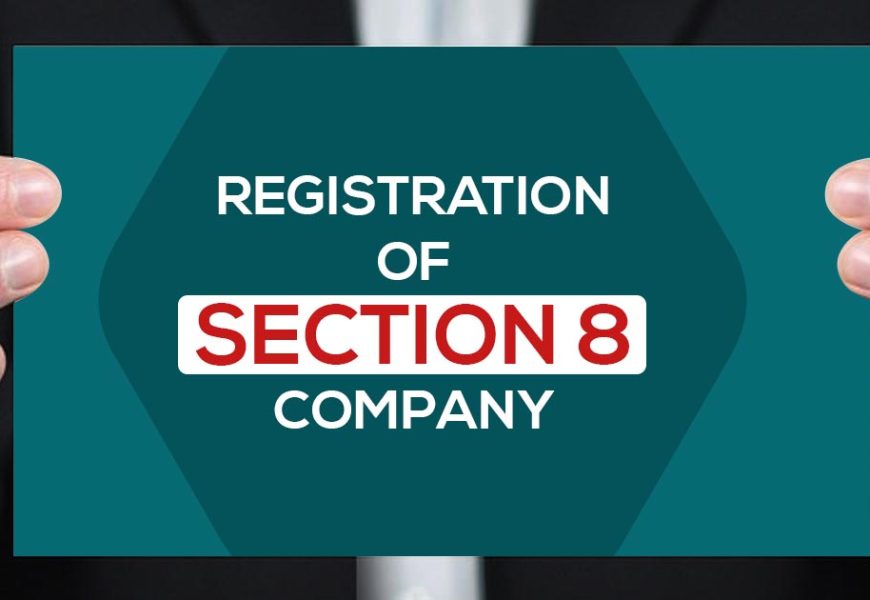Establishing a nonprofit organization in India often begins with registering a Section 8 company. Governed by the Companies Act, 2013, a Section 8 company is designed to promote charitable objectives such as education, social welfare, environmental protection, and more. This article provides a step-by-step guide to Section 8 company registration and explains how to obtain 12A and 80G registration to secure tax benefits for the organization and its donors.
What is a Section 8 Company?
A Section 8 company is a nonprofit entity formed with the primary objective of promoting charitable or public welfare purposes. Unlike traditional companies, these entities reinvest their profits to further their objectives rather than distributing them as dividends to members.
Key Features of a Section 8 Company:
- Operates under strict regulatory compliance.
- Eligible for tax exemptions under the Income Tax Act.
- Recognized by donors and corporates for CSR funding.
The first step to creating a successful nonprofit is to complete the Section 8 company registration, which provides the organization with legal recognition and the ability to operate formally.
Steps for Section 8 Company Registration
The Section 8 company registration process involves multiple steps, ensuring that the organization complies with legal requirements. Here’s a detailed guide:
1. Name Reservation
- Select a unique and meaningful name that aligns with the objectives of the organization.
- File the RUN (Reserve Unique Name) form on the MCA portal.
- Ensure the name reflects the nonprofit nature of the company.
2. Draft Memorandum and Articles of Association
- Prepare the Memorandum of Association (MOA) to outline the company’s objectives.
- Draft the Articles of Association (AOA) to define the company’s operational rules.
3. Obtain Digital Signatures (DSC)
- All directors need a Digital Signature Certificate (DSC) to file online forms.
- Apply for DSC through certified agencies.
4. Director Identification Number (DIN)
- Apply for DIN by submitting the SPICe+ form on the MCA portal.
- DIN is mandatory for all directors of the company.
5. File the Section 8 Application
- Submit Form INC-12 along with the required documents, including the MOA, AOA, and declaration forms.
- Attach proof of address, identity documents of directors, and a detailed description of activities.
6. Approval and License
- After verification, the Registrar of Companies (RoC) issues the license under Section 8 of the Companies Act.
- The company is now officially registered and can begin its operations.
Completing Section 8 company registration establishes the legal foundation for the organization. However, to maximize its potential and attract donors, obtaining 12A and 80G registration is essential.
Understanding 12A and 80G Registration
Once the Section 8 company registration is complete, applying for 12A and 80G registration becomes crucial. These registrations offer significant tax benefits:
- 12A Registration: Grants the nonprofit exemption from paying income tax on its earnings.
- 80G Registration: Allows donors to claim tax deductions on their contributions, making it easier to attract donations.
How to Obtain 12A Registration?
12A registration is essential for ensuring that the income generated by the nonprofit is tax-exempt. Here’s how to apply:
Step 1: Prepare Documents
- Certificate of incorporation and Section 8 company registration license.
- MOA and AOA of the company.
- PAN card of the organization.
- Bank account details and proof of address.
- Statement of accounts since inception or for the last three years.
Step 2: File Form 10A
- Submit Form 10A through the Income Tax Department’s online portal.
- Provide all required details about the organization’s activities, objectives, and financials.
Step 3: Verification and Approval
- The Income Tax Commissioner reviews the application.
- If approved, the organization is granted 12A registration, exempting its income from tax liabilities.
With 12A registration, a Section 8 company can focus on its charitable activities without the burden of income tax. However, to maximize donor engagement, 80G registration is equally important.
How to Obtain 80G Registration?
80G registration provides a tax deduction benefit to donors, encouraging them to contribute to the organization’s cause. Here’s the process:
Step 1: Gather Required Documents
- Certificate of Section 8 company registration.
- PAN card of the organization.
- MOA, AOA, and proof of activities.
- Bank statements and audited financials for the past three years.
- List of donors and details of funds raised (if any).
Step 2: Submit Form 10G
- File Form 10G online via the Income Tax Department’s portal.
- Attach all relevant documents and provide details about the activities and beneficiaries.
Step 3: Inspection and Approval
- The Income Tax Department may conduct an inspection to verify the organization’s operations.
- Upon approval, the nonprofit is granted 80G registration, making donations eligible for tax deductions.
Benefits of 12A and 80G Registration
Obtaining 12A and 80G registration offers the following benefits:
- Tax Exemption for the Organization:
- With 12A registration, the nonprofit’s income is exempt from tax, allowing more funds to be utilized for charitable purposes.
- Increased Donations:
- 80G registration attracts donors by offering tax deductions on contributions, making it easier to secure funding.
- Enhanced Credibility:
- 12A and 80G registration demonstrate the organization’s commitment to compliance, increasing trust among donors and stakeholders.
- Corporate Social Responsibility (CSR) Funding:
- Registered Section 8 companies with 80G benefits are more likely to receive CSR funds from corporates.
Compliance Requirements After Registration
To maintain the benefits of 12A and 80G registration, a Section 8 company must adhere to the following compliance norms:
- Annual Filing:
- File annual returns and income tax returns regularly.
- Maintain Records:
- Keep detailed records of income, expenses, and activities.
- Report Changes:
- Notify the authorities about any changes in objectives, directors, or operations.
Noncompliance can result in the suspension or cancellation of 12A and 80G registration.
Also read : Best Ride On Toy Car
Conclusion
Registering a Section 8 company and obtaining 12A and 80G registration are essential steps in creating a credible and impactful nonprofit organization. While Section 8 company registration establishes the legal framework, 12A and 80G registration provide tax benefits that ensure financial sustainability and attract donors. By following the step-by-step processes outlined above, you can ensure that your organization complies with legal requirements and maximizes its potential to create meaningful change in society.
Also read : Spirit Cancellation Fee: What You Need to Know Before Booking










